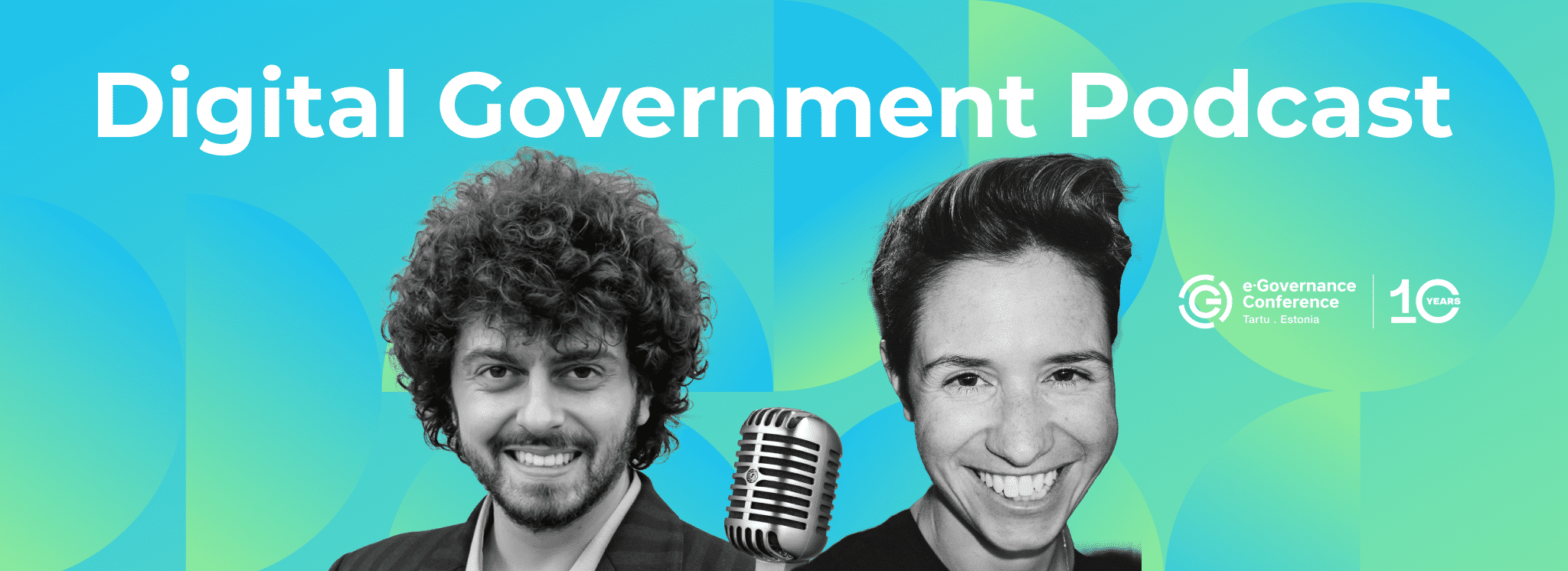
Podcast 🎧 & blog: Good services can make the world a better place
Service design remains in focus at the e-Governance Conference – this year hosting a keynote by the former Director of Design for the UK Government, Lou Downe. The founder also of the School of Good Services, a design and consulting practice that resulted from the wide reach of their design principles, and the book ‘Good Services: How to Design Services that Work’.
A start in the arts, the switch to service design. To then set such standards and practices to create a community of designers committed to making good services. Many interesting things to unpack, in this introductory episode of the Digital Government Podcast. From the essence of services, through designing them all, to fostering a culture of innovation across government – dive in.
Lou Downe on a quest for good services
“At school, I always thought that design was just about making things look nice. For me, art was about making the world a better place. But I realised that it’s a very inefficient way of doing that. So I think that’s why I ended up jumping ship to design because I saw it as a much better way of making the world a better place.” So it started Lou Downe’s journey in service design, which resulted then in the development of 15 principles for good service design.
On one hand, the recurrent encounter with services that either soared in user satisfaction, at the expense of organisational efficiency; or plummeted, due to neglect of fundamental design principles. But also, the awareness that services could be transformative if they adhered to a set of well-defined principles that prioritised users’ needs, without sidelining organisational goals or societal impact.
A truly good service transcends the dichotomy of user experience and organisational outcomes; it’s a better balance of the two, that also considers broader societal and environmental implications. “I spent a very long time working on a lot of very mixed services, some good, some definitely not so good. So the reason why I ended up writing the book, ‘Good Services’, was essentially out of frustration. Getting bored of saying the same thing over and over again, like, that services need to be easy to find, set and meet users’ expectations, and ensure access and inclusivity.”
15 principles and one community of service designers
This idea led Downe to put years of experience and insights into a coherent framework that organisations could practically apply. Simple as that. With contributions from around the globe on the development of these principles. This collaborative effort enriched the principles, while also validating their applicability across different contexts and cultures.
“Sometimes we only focus on the user experience or the organisation’s outcomes, we don’t think holistically about what we mean by a good service – how needs, delivery, are interlinked with society, or even the planet more widely,” Downe says.
Only logical that there would be an initiative supporting this vision, and that’s the School of Good Services. Every community needs a home, so why not a dedicated platform to disseminate principles more systematically? And offer training, coaching, and capability building to organisations. Communities aren’t static, they keep developing their own practices – in this case, learning, adapting, and innovating in service design. And they need a home for that. Reflecting that good services are an ongoing journey of improvement and adaptation, receptive toward changing users’ needs and societal expectations.
The evolution of service design in government
There’s evolution and growth in how service design became a prerogative, within the UK Government. From the inception of their role, where service design was a nascent concept struggling for recognition, to the establishment of a vibrant community of 2000 designers, Downe’s journey reflects a significant shift in mindset and practice within the government. This growth wasn’t incidental; it was pushed by a deliberate effort to integrate design thinking into the fabric of government operations.
“I remember joining on my first day, essentially being the only service designer at the Government Digital Service. And being told that was my job to design all of the services. Which is easy, no? So, I spent obviously a little while trying to do that. And then realising that actually, we needed to develop more of a strategy of building capability, helping people to understand actually how to go beyond just the digitisation of services,” they recall.
This transformation was partly fueled by the early successes and visual consistency achieved by the Government Digital Service. Yet, it was Downe’s strategic push to extend design’s reach beyond digital interfaces to holistic service experiences. It was not just about expanding the design team; rather, instead, fostering a culture of innovation, collaboration, and user-centricity across different departments. It involved creating ecosystems where designers, policy makers, and operational teams could converge to reimagine public services. Developing design systems, performance platforms, and service standards to create a common language and framework for service design across the government.
“My role evolved from being, you know, kind of a poor, lonely service designer on my own to running this community of 2000 people across government. My job was to provide all of the tools and support the community, design trainings, performance platforms, data monitoring, service standards – all things that that community, and the government more widely, needed in order to design and deliver better services,” they explain.
“Gov.uk significantly shifted my perspective on service design. It demonstrated that design isn’t just about the visual or immediate user interface; it encompasses the entire architecture of service delivery, from the visible elements to the underlying systems, processes, and policies. This integration ensures that all aspects of a service are harmoniously connected, emphasising the importance of considering both the form and function in design. It’s a living example of how thoughtful design can seamlessly blend all these components to serve the user effectively and efficiently,” they conclude.
Interested in getting more insights into good service design? Join us at the e-Governance Conference on 22-23 May 2024!
Check the programme and get your tickets at egovconference.ee
















